Jerusalem Reunited 1967: Three Israeli Soldiers, One Iconic Photo
The Paratroopers Who Liberated Jerusalem in June 1967, Then and Now
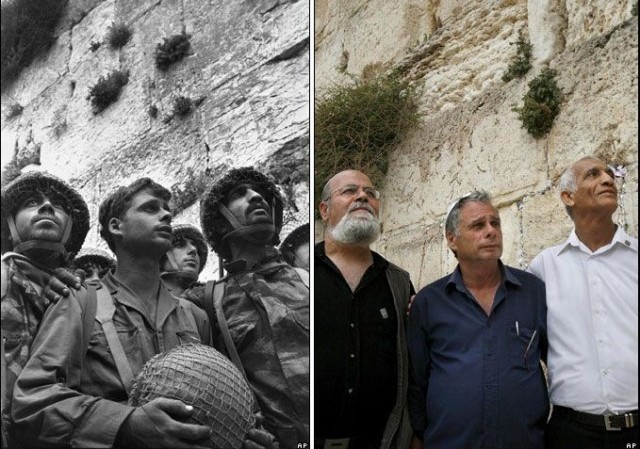
Tomorrow (June 5) is Yom Yerushalayim (Jerusalem Day).
The newest addition to the Jewish calendar, it’s held on the 28th day of the Hebrew month of Iyar—six weeks after the Passover seder and one week before the eve of the holiday of Shavuot.
In June 1967, 28 Iyar was the third day of the Six Day War.
As I discussed in a post for last year’s Yom Yerushalayim, the day celebrates the reunification of Israel’s capital city, when Jewish forces brought Jerusalem “back to Jewish sovereignty”.
There’s a huge amount of information and research on the two-day (June 6-7, 1967) Battle for Jerusalem, when the 55th Paratroopers Brigade retook the Old City and liberated Jewish holy places from an illegal Jordanian occupation.
As I note below, there are best-selling books, dramatic video recordings, preserved raw footage, and nearly 50-years-worth of analyses.
But one item stands out.
It’s the “picture seen around the world”. An image etched in history, capturing Israel and the Jewish people at their most triumphant moment:
Studying the Battle for Jerusalem
Literally hundreds of books, scholarly journal articles, feature films and documentaries, and opinion-editorials address the battle for Jerusalem’s reunification and the significance of Jewish Jerusalem’s reconstitution.
There’s never been a shortage of information and materials from the time, preserved for future generations to appreciate and cherish.
One of my favorite items is the riveting recording (listen or read the transcript here) of the IDF entering the Old City. It’s just a few minutes long and parts of it are a bit patchy, but you can distinctly hear the sounds of gunfire, and the footsteps of the first unit of paratroopers who break through the Old City and draw closer and closer to the Temple Mount—Judaism’s Holy of Holies.
The battle-hardened military leaders—General Uzi Narkiss and Colonel Motta Gur—give instructions on where to go.
Then, in three words of modern Hebrew that are among the most important ever uttered in the history of the Jewish people, Gur announces on the army wireless “Har HaBayit B’yadenu!”—“The Temple Mount is in our hands!”.
The soldiers recite the ‘Shehechianu’ blessing—(Translation: Blessed art Thou L-rd G-d King of the Universe who has sustained us and kept us and has brought us to this day). One of the commanders says,
I’m walking right now down the steps towards the Western Wall. I’m not a religious man, I never have been, but this is the Western Wall and I’m touching the stones of the Western Wall”.
Toward the end of the recording, a triumphant Brigadier General Shlomo Goren, who would later become Israel’s Chief Rabbi, recites the memorial prayer and sounds the shofar. You can clearly discern the soldiers weeping with sorrow over their fallen comrades.
With soldiers sobbing and the sound of gunfire still in the background, the recording concludes with Goren rendering a revised version of the traditional blessing, “Next Year in Jerusalem”. He says: “Le-shana HA’ZOT b’Yerushalayim ha-b’nuya! be-yerushalayim ha-atika!” (Translation: THIS year in a rebuilt Jerusalem! In the Jerusalem of old!).
So there’s a ton of quality material for scholars and others to mine.
In recent years, the declassification of thousands of formerly top-secret documents in Israel’s archives have also supplied new insight into the decision-making process before, during, and immediately after the war, resulting in more published work.
Former Israeli Ambassador to the U.S., historian Michael Oren’s pathbreaking recent volume on the 1967 war and the battle for Jerusalem, which draws on this archival material, and veteran journalist Yossi Klein Halevi’s book on the paratrooper reserve brigade that “changed the history of Israel and the Middle East” are noteworthy new contributions to an already saturated market.
There’s even a website dedicated to the Six Day War.
Created nearly a decade ago to mark the war’s 40th anniversary, it’s well-worth taking some time to pore over its treasure trove of primary and secondary sources, raw footage, original testimony and official statements, bibliographies and hundreds of hyperlinks to analyses written over the years about the war and its aftermath.
But despite all this wealth of information, one single item depicting the moment of Jerusalem’s reunification remains etched in the collective psyche of Israelis and Jews across the planet: the iconic image of three battle-weary paratroopers gazing at their surroundings—the stones of the Western Wall (the Kotel)—in “stunned amazement”.
The three soldiers were all members of the same paratrooper battalion that took part in the battle for Jerusalem’s Old City. They were among the first Israelis to reach the Western Wall since it fell into Jordanian hands in 1948.
The moment they saw it for the first time was captured by a photographer who happened to be at the right place at the right time. He won the Israel Prize for the image, and launched a distinguished photojournalist career.
Copied and shared around the world, the names of the men who posed for the photograph aren’t famous. But their faces have become a symbol of the Six Day War.
Below I highlight who these men were, how they came to be at the Kotel on June 7, 1967, and what’s happened to them since then.
Putting Names to the Three Faces
The three soldiers who were photographed staring in awe upon the Western Wall were Zion Karasanti, Yitzhak Yifat, and Haim Oshri.
Karasanti and Yifat were 24 at the time; Oshri 23.
All three were mobilized as reservists, and joined their unit (the 3rd company of the 66th Battalion of the Paratrooper’s Brigade’s reserve force—55th Brigade) which was already in combat. The company fought at Ammunition Hill, where they eventually overran Jordanian forces.
Then they made their way to the Old City.
They had never seen the Western Wall, so they didn’t immediately recognize where they were standing.
Karasanti, Yifat and Oshri all remained in Israel.
Karasanti became a director and choreographer and lives in Afula. Yifat, who lives in Kiryat Malachi, became an obstetrics and gynecological surgeon. It’s unclear what Oshri wound up doing, but he too has lived out his life in the Jewish state.
The Interviews: Recalling a Hard-Fought Battle
Over the years, the three paratroopers have given interviews sharing their memories of June 7, 1967 (see here, here and here).
In them, Karasanti recalls how his mother cried when he left for the battle but that “I knew our country had no choice, and I had to do my duty to defend it”.
His interviews include poignant depictions of the hand-to-hand combat at the fierce and bloody battle at Ammunition Hill:
…all we could see was a hill surrounded by trenches and barbed wire. When we started to move they threw everything they had at us. There was a passage covered with barbed wire. I jumped on it and helped others to cross. I felt no pain. We went into the trenches. They were not very deep, but they were quite narrow. When someone was hurt, we had to lift his body over our heads”.
Yifat also remarks in the interviews on the difficult face-to-face fighting at Ammunition Hill:
I fought like a tiger…a Jordanian saw I was out of bullets and he charged at me with a bayonet. I don’t know how I did it, but I took his gun and shot him with it”.
The interviews highlight the courage of these young men. But I was struck by the fact that all three remarked on the heroism of the Jordanian soldiers, who “fought hard to the last man”.
Before researching this post, I was aware of how brutal the engagement at Ammunition Hill was—during the battle 71 Jordanian soldiers and 36 Israelis died. But I didn’t know that the paratroopers who fought and won the intense fight there built a memorial not only for their fallen comrades but one for the Jordanians too, “in honor of their bravery”. Now I know.
Past Meets Present: Three Paratroopers Then and Now
Over the last 40+ years, Karasanti, Yifat and Oshri have periodically returned to the Kotel to recreate the scene and recall their “unforgettable moment”.
Here’s a recent image of Yifat with his grandkids:
https://twitter.com/coinabs/status/734926678472818690
This post’s featured image is from 2007.
There’s also a 2014 photo of the three men together taken by David Rubinger, the same photographer who captured their astonished faces back on June 7, 1967:
Karasanti and Yifat were 70 years old then, and Oshri a year younger. But Rubinger was already 90. Despite his age, he lay on the ground just as he did nearly a half century earlier to recreate the exact same angle.
Then people reportedly gathered around, including some born decades after the battle for the city, to thank the former soldiers and Rubinger too.
But Rubinger dismissed what he described as undeserved accolades. From his perspective the historic photo is the “worst picture he ever took”.
The Photographer
In a 2014 interview Rubinger claimed
The picture made my life. I won the Israel Prize for it, and it became an icon worldwide…The audience saw in these three faces something it wanted to see. People still say, ‘those are the guys who cried by the Kotel.’ Nothing better could happen to a photographer…[but] from a photogenic perspective, it’s a bad picture. A good photograph includes no unnecessary elements. But here there are all kinds of people in the background, half a head here, a quarter of a nose there, another half an ear there. That’s not good photography”.
I don’t have an artistic bone in my body, and to my untrained eye it looks like a damn good photo to me. But best to leave the aesthetics to the professionals.
Rubinger prefers the image he took of Rabbi Shlomo Goren, which he said made him cry when he took it:
Rubinger’s story—how he came to be at the Kotel on June 7, 1967—is also remarkable.
Born in Vienna in 1924, he escaped the Nazis by fleeing to British-controlled Palestine in 1939. His father also managed to get out of Europe, but his mother perished in the Holocaust. Rubinger settled in a Jordan Valley kibbutz. By 1967 he was a press photographer working for Time-Life magazine.
He was covering the war on the southern front at El Arish in the Sinai but rushed to Jerusalem when he learned that the IDF was planning a retaliatory strike on Jordanian forces, which had been relentlessly bombarding the western half of the city.
He was able to join the paratroopers, arriving with them in time to take the first photos of Israeli troops at Judaism’s sacred site. Back in 2007, Rubinger told an interviewer:
I didn’t have any great feeling for Jerusalem. I just wanted to be the first with the photographs. There was still some sniping going on…When I got there, it was very emotional. Everyone around me was crying…I think there was such euphoria because in the weeks before the war there was a sense of doom. The national stadium was prepared for 40,000 graves and even if we thought we might win, it would be a costly victory. The humor before the war was very dark. ‘Would the last person to leave please turn out the lights’”.
The IDF: Strength in Diversity
The three soldiers, who were thrown together on one fateful day in June 1967 and immortalized by a talented photographer, were then—and remain today—a diverse group.
They reflect the diversity in Israeli society itself—and in its armed forces.
Karasanti and Yifat weren’t religious Zionists. Oshri—a Sephardic Jew who came to Israel as a Yemenite refugee in 1949—was Orthodox.
Of the many interviews that the three of them have given, only Oshri has spoken at length about the religious significance of the day:
As an Orthodox Jew it was special for me to be involved in the fight for Jerusalem. It doesn’t matter if you’re from Poland or Yemen, Jerusalem is our common bond. Every day we pray three times to Jerusalem, and I could have never imagined the magic of seeing the Kotel for the first time. That was my dream!”.
In researching this post, I came across a 2013 video clip of Yifat at the Kotel with a couple of other 1967 veteran paratroopers. They had come to the Wall to voice their support for the monthly women’s prayer service there.
The YouTube clip is in Hebrew and there are no English subtitles, but it’s worth watching. In it, Yifat is visibly the center of attention.
According to media reports, the fact that Yifat and a few other “liberators of the Old City” from the Paratrooper Brigade’s reserve force were on hand enabled the women to pray donned in tallit (prayer shawls) undisturbed; they were arrested only after the service, when the vets had left.
During the event, Yifat reportedly remarked on the women’s campaign to hold egalitarian prayer services—a struggle that’s been ongoing since the late 1980s:
We came here today to identify with them. The Kotel belongs to everyone and not just one segment of the population…It would be going a little far to compare this to the battle we fought. I hope no one is going to get killed here”.
In the video clip, Yifat says “I have nothing against the religious. Everyone is Jewish—all are the Children of Israel. They should pray as they want to” (translation mine).
Yifat’s former commander Micha Eshet, who was the 66th brigade’s operations officer during the Six Day War, was also reportedly present.
Best I can tell though, neither Karasanti nor Oshri were there.
Other Exceptional Images from June 6-7, 1967
David Rubinger’s 1967 photo of Israeli paratroopers at the Kotel is one of the most famous pictures in modern Jewish history.
It’s deservedly an award-winning image.
As Yossi Klein Halevi remarked several years ago, the image replaced “skeleton heaps in death camps with paratroopers at the Wall as the enduring Jewish image of the century”.
The uniqueness of the moment—both universally for all Jews and for the Israelis who personally experienced the day—was also captured by other photographers in notable photos, some of which have only recently come to light (under copyright, but see here).
They show a different side to the war, one in which the pain and fatigue of the paratroopers (who lost nearly 100 men in the two days of combat to retake the city) isn’t “papered over with collective glee”.
Here are some other photographs that I find particularly memorable:
Jerusalem Day: Setting the Record Straight
As I noted in last year’s post, Jerusalem Day marks the end of nearly two decades of Jordanian oppression against Jews in the Holy City.
In 1949 Jordan ethnically cleansed the Jews from the ancient Jewish Quarter of the Old City.
Then, in a shameless violation of the April 1949 truce agreement, for nearly two decades it denied Jews the right to worship at the Western Wall—(a ban that also prevented Arab Israelis from visiting their mosques on the Haram al-Sharif).
The Jordanian authorities spent their nineteen-year-rule looting, ransacking, befouling, and dynamiting every last vestige of Jewish heritage.
As Marshall J. Breger of the Columbus School of Law, Catholic University of America and co-author of a seminal study on the city describes:
Twenty-seven synagogues and some thirty schools were damaged or destroyed. The Porath Yosef, Hurva, and Tiferet Israel synagogues were destroyed. The famous Yohanan ben Zakkai Synagogue was devastated from within and survived only as a shell. The synagogue founded by the great biblical scholar Nachmanides in 1267 was also devastated…the hallowed Jewish cemetery on the Mount of Olives suffered a similar fate…Graves ripped open, and bones scattered; thousands of tombstones smashed or removed by the Jordanian army to build fortifications, footpaths, army camps, and latrines…The Jewish Quarter was so thoroughly destroyed, according to news reporters, that it had the look of Stalingrad or Berlin in World War II”.
Yet, despite these deplorable and unlawful actions, before June 6, 1967 Israel had no designs on the Jordanian-controlled portion of the city. The possibility of peace with Jordan was viewed as more important than the Jewish vision of reclaiming Jewish Jerusalem in any practical, physical sense.
As I note in my book,
Before 1967 there were very few Israeli politicians voicing an interest in east Jerusalem…by 1967 Israelis had grown accustomed to an internationally divided Jerusalem and had accepted partition of the city.”
Conclusion
It’s often charged that Israel’s entry into east Jerusalem in June 1967 was an act of aggression. Israel is frequently accused of having had a premeditated plan of territorial expansion. In this formulation the war was a ruse for a land grab.
The reality is that Israel acted in self-defense.
The IDF only crossed over into the Old City after Jordan ignored Israel’s repeated appeals to avoid hostilities. These strenuous efforts made to persuade King Hussein to stay out of the conflict are all well-documented.
But because of misinformation supplied by the Egyptians, Hussein was under the false impression that the Arabs were winning the war. It emboldened him to launch multiple attacks across Israel, including an intensive bombardment of Jewish civilian locations in Israeli-controlled west Jerusalem.
So by the time three astonished Israeli paratroopers, the rest of their company, and a savvy photographer found themselves at Judaism’s most sacred spaces, Hadassah Hospital, Israel’s parliamentary building (the Knesset), the Prime Minister’s Office and 900 other building in west Jerusalem had already been damaged by thousands of Jordanian mortar shells in attacks that had by then killed twenty Israelis and wounded over a thousand.
Years later, King Hussein would publicly admit that believing the bogus tidings of victory from his Egyptian ally on June 5, 1967 was one of the biggest blunders he ever made.
Bottom line: On June 7, 1967 Jewish heritage was liberated from an unlawful and unjust occupation by a stunning feat of arms and the courageous men of Israel’s 55th Brigade. It was a miracle, not least because it was so totally unexpected.
Feature Image: Israeli army paratroopers Zion Karasanti, left, Yitzhak Yifat, center, and Haim Oshri, right, stand next to the Western Wall (the Kotel) in Jerusalem’s Old City after it was captured during the Six Day War on June 7, 1967, left, and 40 years later, May 16, 2007.
Miriam F. Elman is an associate professor of political science at the Maxwell School of Citizenship & Public Affairs at Syracuse University. She is co-editor of the book, Jerusalem: Conflict and Collaboration in a Contested City, published by Syracuse University Press. Follow her on Twitter @MiriamElman
 DONATE
DONATE
Donations tax deductible
to the full extent allowed by law.


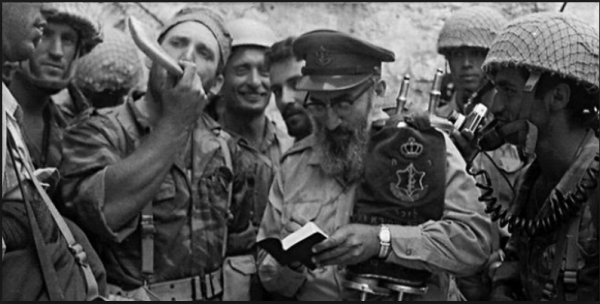
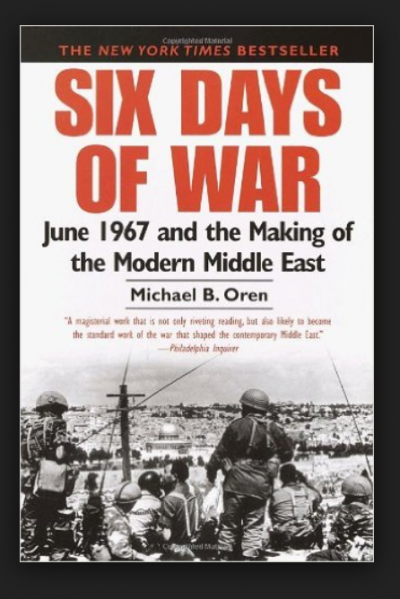


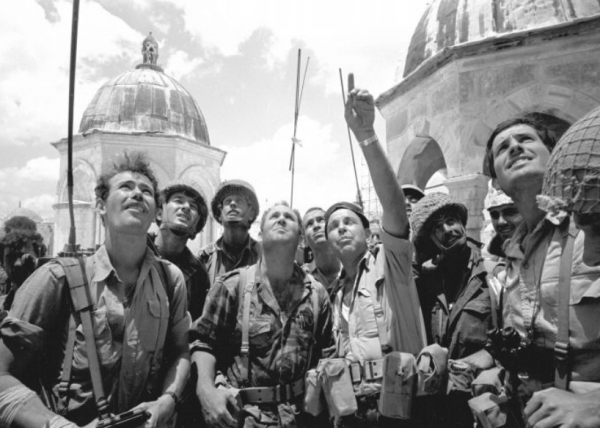
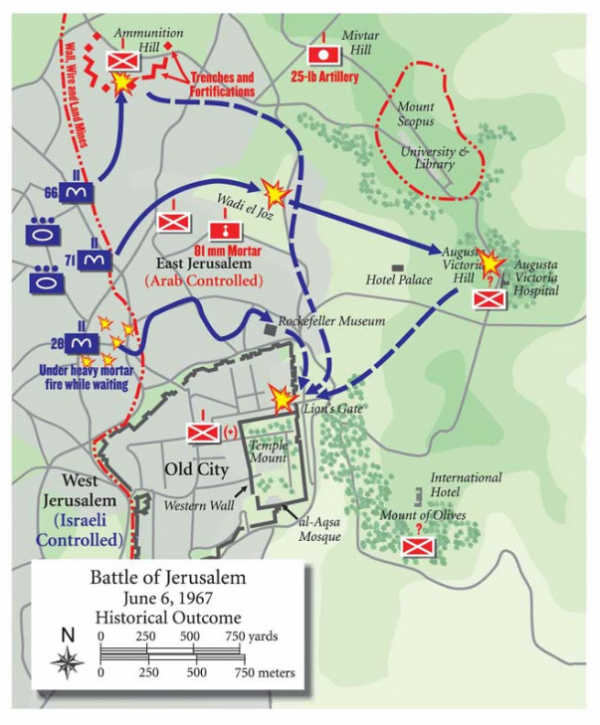
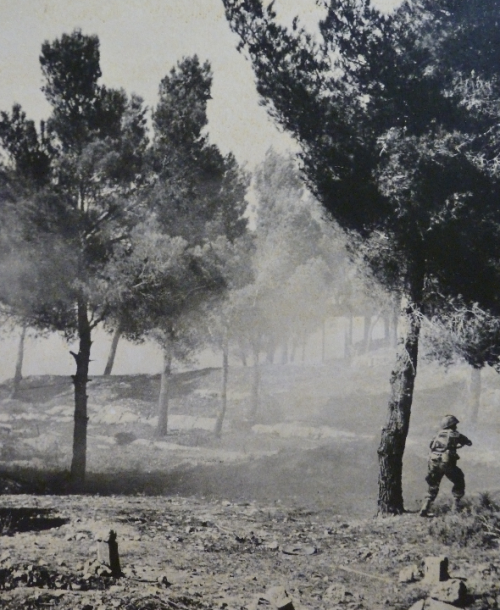

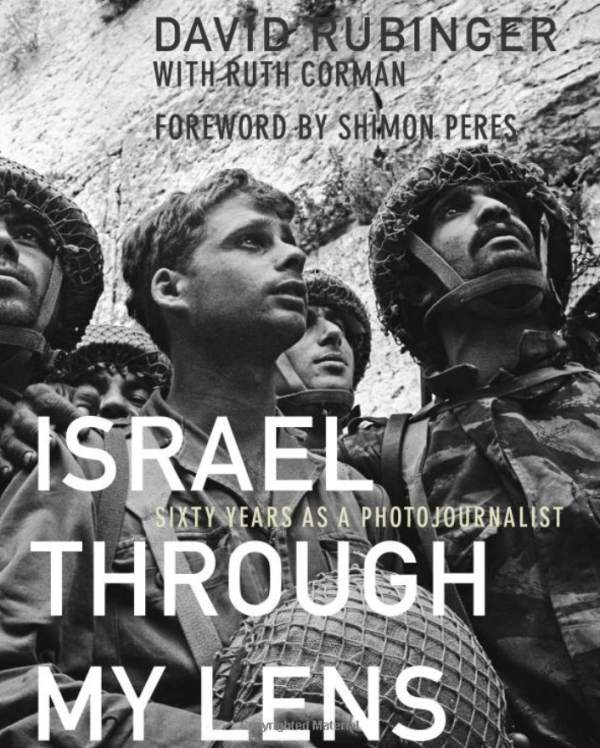
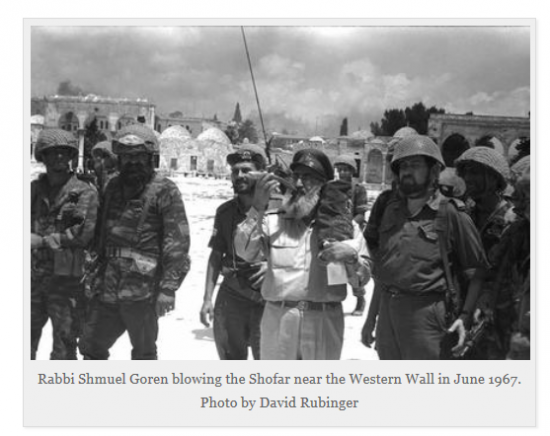

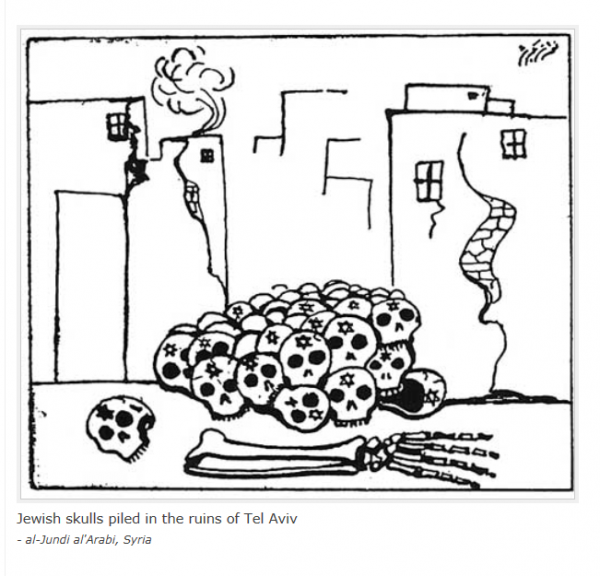

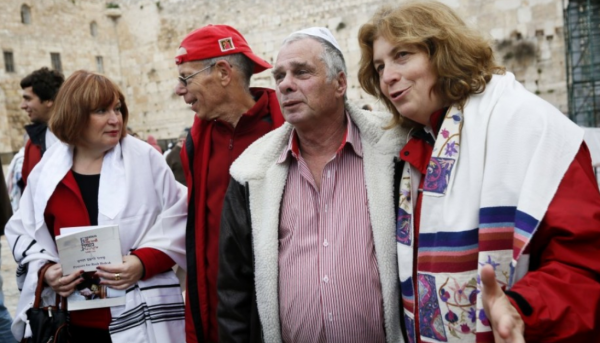
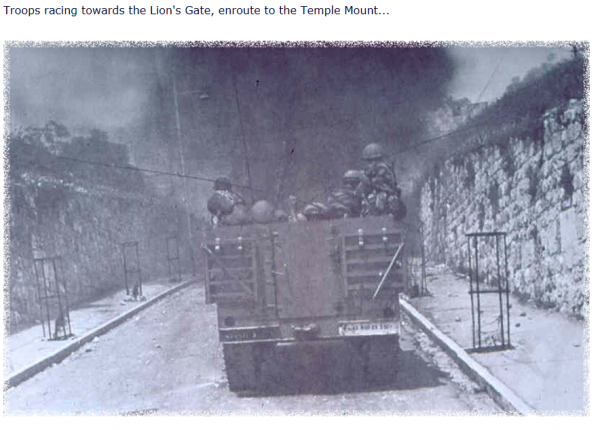
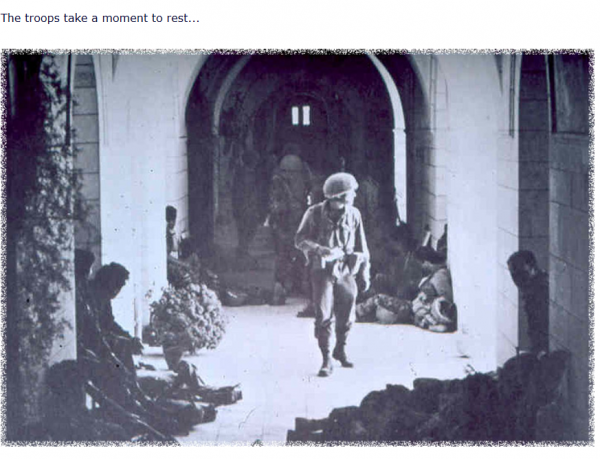
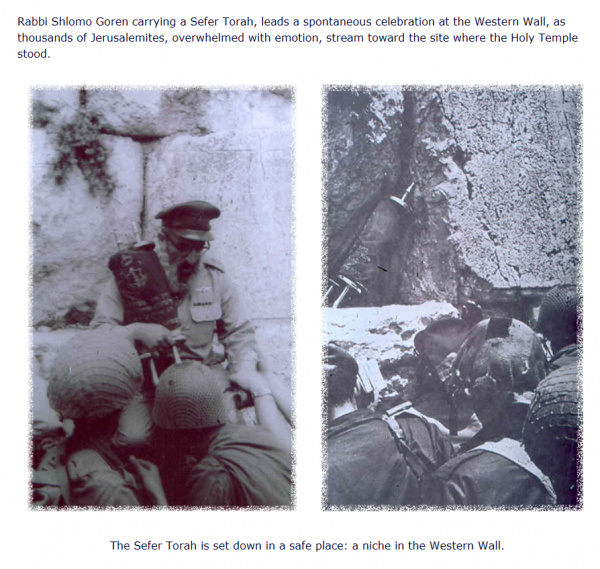
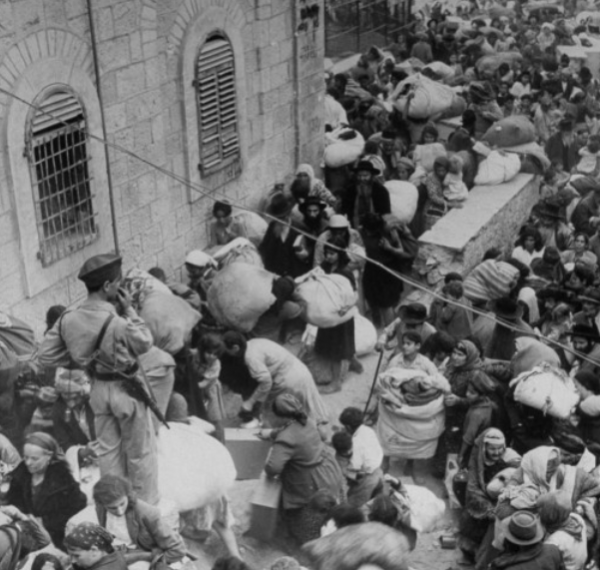
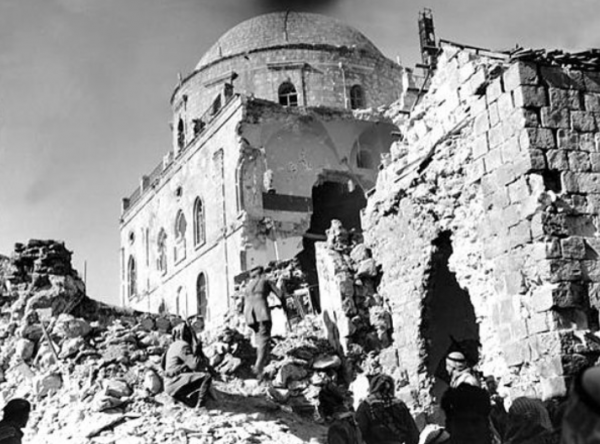
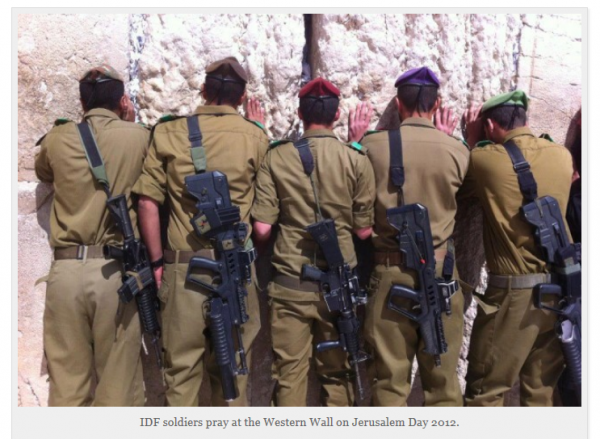







Comments
Looks like that could still whip some butt, especially Oshri.
I fully agree!
Miriam F. Elman, Thank you so very much for this most interesting article with its blend of personal and national stories. They are most inspiring.
In honor, Hatikva – The National Anthem of Israel:
https://www.youtube.com/watch?v=NjfFpFW9OdA
You are welcome! Thanks too for posting Israel’s anthem.
“To be a free nation in our land” particularly stands out. The willingness to fight for what they believe. Has not this been the history of the Jews from ancient times unto today!
Miriam, thank you for this excellent coverage of the Six Day War. It is so vitally important to report all the facts to set the record straight. How is it that within less than half a century the historical record has become distorted and twisted in order to make Israel out as the imperialist aggressor, and the Palestinians (oops, sorry, they didn’t exist yet, I mean the Arabs) as the poor downtrodden victims.
From even a superficial reading of the events of the time it is clear that Israel had a clear casus belli, and was entirely justified in its preemptive strike. It was in a mortal existential danger unless it took that strike.
Your post here, with all these valuable video clips and reportage from that very time, is a vital link in the chain of an accurate historical record.